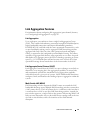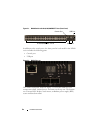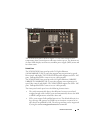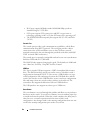
Switch Feature Overview 87
Internet Small Computer System Interface (iSCSI) Optimization
The iSCSI Optimization feature helps network administrators track iSCSI
traffic between iSCSI initiator and target systems. This is accomplished by
monitoring, or snooping traffic to detect packets used by iSCSI stations in
establishing iSCSI sessions and connections. Data from these exchanges may
optionally be used to create classification rules to assign the traffic between
the stations to a configured traffic class. This affects how the packets in the
flow are queued and scheduled for egress on the destination port.
For information about configuring iSCSI settings, see "Configuring iSCSI
Optimization" on page 459.
Layer 2 Multicast Features
For information about configuring L2 multicast features, see "Configuring L2
Multicast Features" on page 803.
MAC Multicast Support
Multicast service is a limited broadcast service that allows one-to-many and
many-to-many connections. In Layer 2 multicast services, a single frame
addressed to a specific multicast address is received, and copies of the frame
to be transmitted on each relevant port are created.
IGMP Snooping
Internet Group Management Protocol (IGMP) Snooping is a feature that
allows a switch to forward multicast traffic intelligently on the switch.
Multicast traffic is traffic that is destined to a host group. Host groups are
identified by the destination MAC address, i.e. the range 01:00:5e:00:00:00 to
01:00:5e:7f:ff:ff:ff for IPv4 multicast traffic or 33:33:xx:xx:xx:xx for IPv6
multicast traffic. Based on the IGMP query and report messages, the switch
forwards traffic only to the ports that request the multicast traffic. This
prevents the switch from broadcasting the traffic to all ports and possibly
affecting network performance.


















